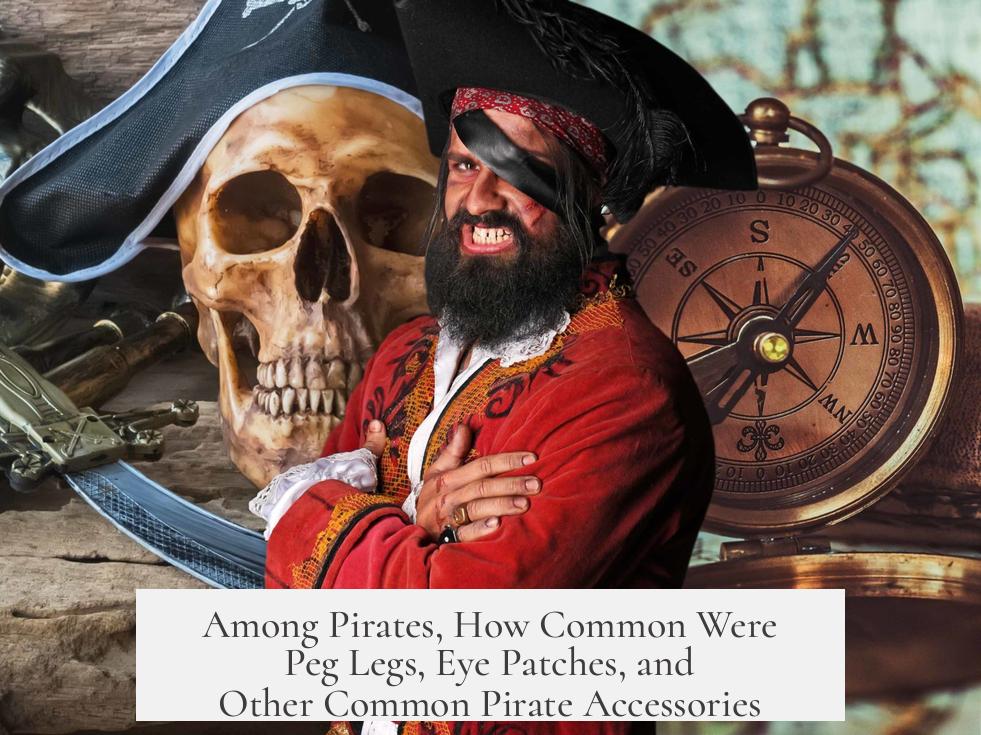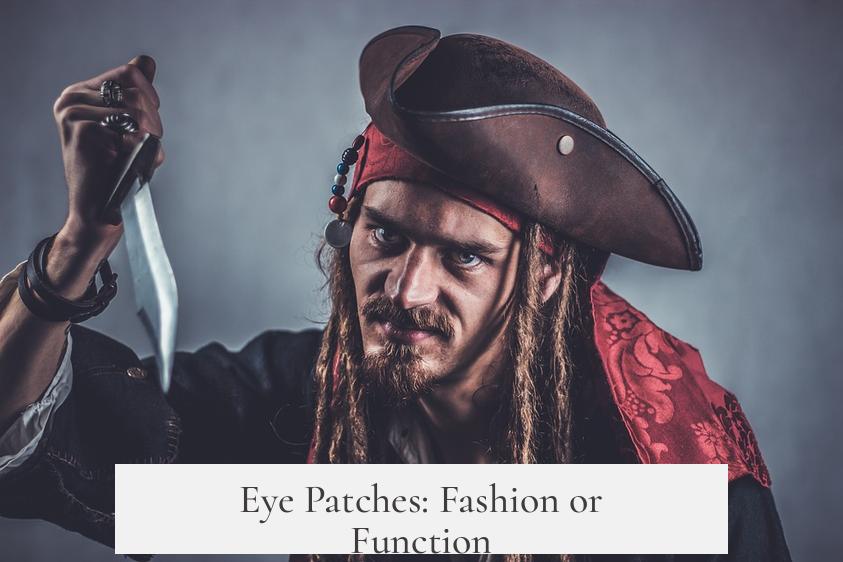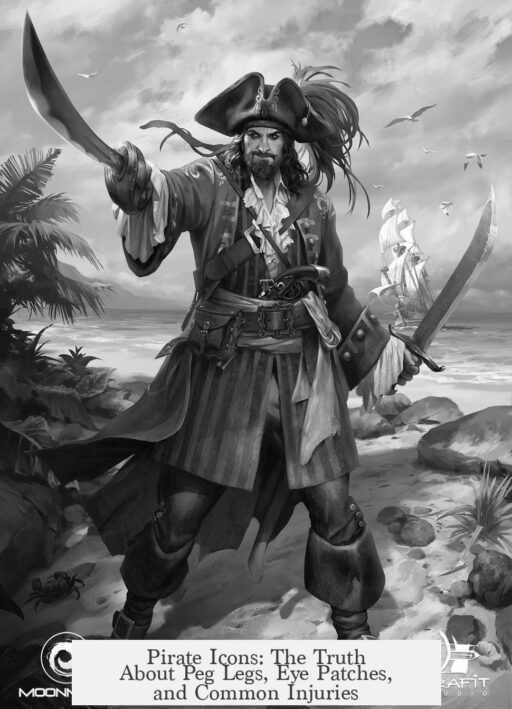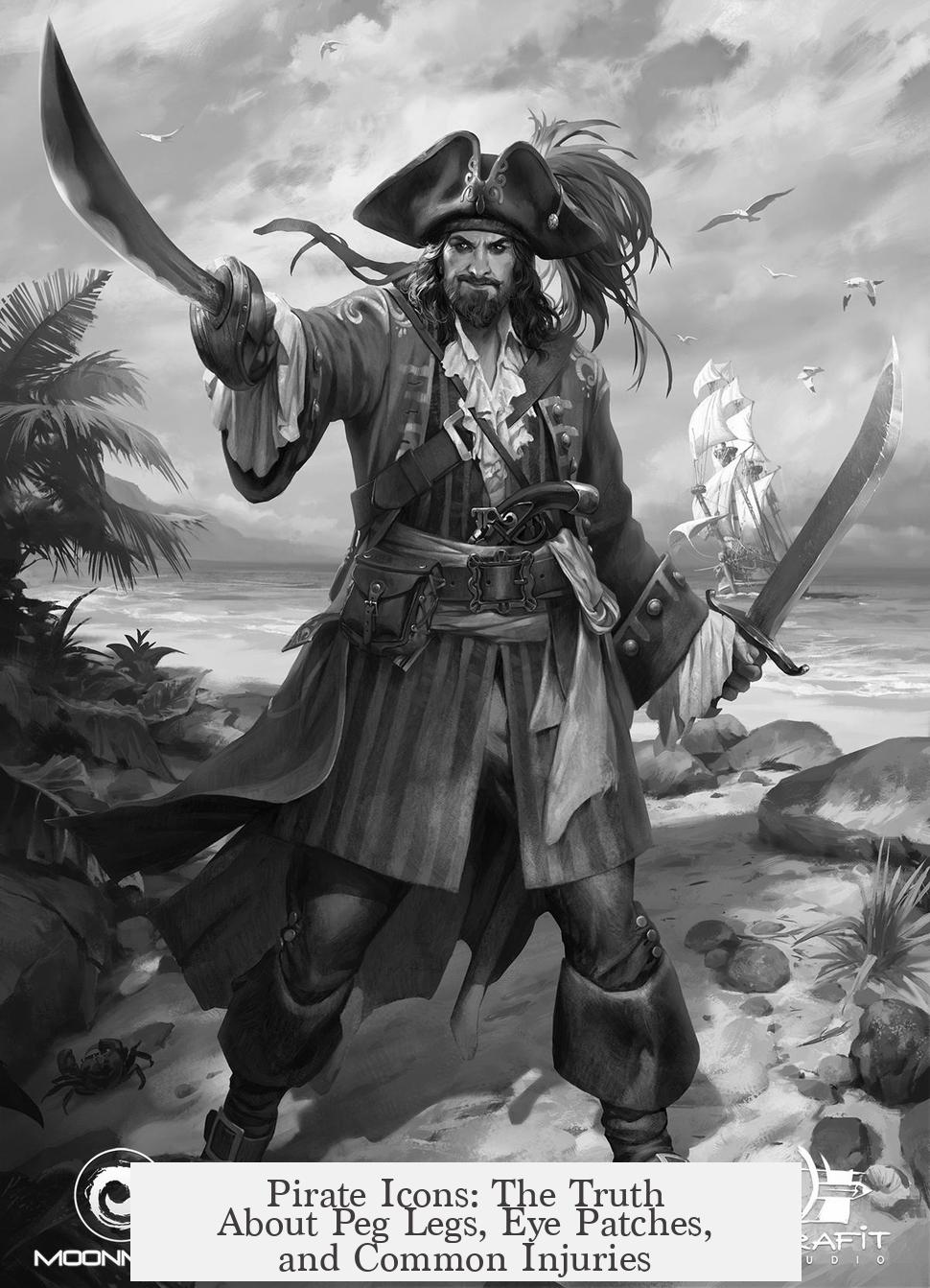Peg legs, eye patches, hooks, and other iconic pirate accessories were real but far less common among pirates than popular culture suggests. These items existed as prosthetic or compensatory measures for injuries, but their actual frequency was limited by medical knowledge, survival chances, and the needs of pirate crews.
Historical pirate codes provide insight into how injuries were viewed among pirates. For example, Henry Morgan’s articles outline specific compensation for lost limbs and eyes:
- Loss of a right arm: 600 pieces of eight or six slaves
- Loss of left arm: 500 pieces of eight or five slaves
- Loss of right leg: 500 pieces of eight or five slaves
- Loss of left leg: 400 pieces of eight or four slaves
- Loss of an eye: 100 pieces of eight or one slave
- Loss of finger: same as an eye
These structured payments demonstrate that serious injury was an acknowledged part of pirate life. Crews compensated injured members, showing there was some system to handle maiming consequences. However, this does not imply such injuries were widespread, only recognized.
Medical treatment available during the late 17th and early 18th centuries was limited. Ships rarely had professional doctors. Instead, barbers or carpenters usually treated wounds. Pirates had some practical knowledge of wound care:
- Cleaning wounds to reduce infection
- Applying bandages and changing dressings regularly
- Removing embedded objects when possible
Amputations were crude and painful. The carpenter typically performed the operation, sometimes after giving the injured person rum as an analgesic. The technique included sawing off the limb, folding skin to cover the stump, and tight bandaging. Survival after such surgery was uncertain, given primitive hygiene and absence of antiseptics.
This rudimentary medical environment limited the chance for pirates to survive major injuries that might require peg legs or hooks. Limited professionalism and poor working conditions on ships increased risk of complications, diminishing chances of recovery and continued service.
Because injuries that disabled fighting ability severely compromised a pirate’s usefulness, such serious impairments appear to have been relatively rare. Pirates depended on combat skills and mobility, so crews likely prioritized members able to fight effectively. Maimed individuals could receive compensation and care but probably faced challenges maintaining active roles.
Eye patches did take some real-world use but on a narrow scale. The common belief that eye patches helped pirates adjust one eye to dark conditions is plausible but not definitively documented. The idea is that covering one eye preserved night vision, useful during shifts below deck. However, clear historical evidence remains limited.
Peg legs and hooks existed as functional prosthetics replacing lost limbs. Peg legs allowed for basic mobility, and hooks sometimes substituted for missing hands. Still, these devices were crude, and not common among pirate crews due to the severity of the initial injury, difficulty in survival, and practical limitations for movement and fighting.
In contrast to cinematic depictions, pirates rarely resembled the heavily impaired, hook-handed, peg-legged characters often seen in movies. Many pirate portraits and records show fewer such disabilities.
| Accessory | Frequency Among Pirates | Function and Notes |
|---|---|---|
| Eye Patch | Uncommon | Possible aid for night vision adaptation; compensation paid for eye loss. |
| Peg Leg | Rare | Basic mobility after leg amputation; survival and use limited. |
| Hook | Rare | Used in cases of lost hand; functional but limited. |
Ultimately, pirate accessories like peg legs and eye patches reflect some historical truth but are largely exaggerated. Most pirates did not carry these physical marks of injury. Survival through serious wounds was difficult. In addition, pirates needed to remain capable for combat and sailing duties.
The balance between injury prevalence, medical limitations, and operational demands shaped the reality of pirate life far from the Hollywood stereotype.
- Pirates formally compensated crew members for lost limbs and eyes.
- Medical treatment was rudimentary, often by barbers or carpenters.
- Amputations and injuries reducing combat ability were survivable but uncommon.
- Eye patches may have had a practical use but are mostly anecdotal.
- Peg legs, hooks, and patches existed but were not widespread.
- Popular imagery exaggerates the frequency of these prosthetics among pirates.
Among Pirates, How Common Were Peg Legs, Eye Patches, and Other Common Pirate Accessories?

Were peg legs, eye patches, and hooks the daily fashion statements of pirates? Not exactly. While these accessories did exist among pirates, they were far less common than movies make you believe. Let’s dive into the gritty truth behind these iconic pirate traits and see what reality looks like, beyond the Hollywood swagger.
Pirates lived in a brutal world where injuries were frequent but surviving them—and the aftermath—was a different story. Contrary to popular belief, pirates with peg legs and eye patches were exceptions, not the rule. Pirate life was dangerous: battles, harsh ship conditions, and ocean storms made injuries inevitable, yet the practical need to keep a crew ready for combat meant crippling wounds often ended careers, or worse.
Serious Injuries Were Acknowledged and Compensated
Imagine this scenario: you lose a leg in a fight. How much is your value now? Pirates had surprisingly formal damage control rules—compensation schedules laid out in their articles. For example, losing a right arm was worth 600 pieces of eight or six slaves. Losing a right leg fetched 500 pieces of eight or the same slave equivalent. Even an eye loss receieved 100 pieces or one slave worth of “pay.” These rules confirm that pirate crews fully expected serious injuries to occur.
This compensation system shows pirates were professional workers in their own way, with structured punishments and rewards related to their well-being. But note: these payouts don’t mean injuries were common—they just meant they were possible risks to be planned for.
Medical Treatment Was Basic but Functional
Did the dreaded peg leg result from a botched surgery? Partly yes, partly no. Medical knowledge in the late 17th and early 18th centuries was crude. Pirates and sailors cleaned wounds and used bandages wisely, often kept dressings clean to prevent “infectious air” from spoiling wounds (a bit of pre-germ theory superstition but practical nonetheless).
Without doctors on deck, amputations usually fell to the ship’s carpenter. With a saw, a swig of rum to dull the pain, and a lot of grit, they removed limbs. They’d leave some skin to cover the wound—basic but effective technique—and bandage it tightly. Survivors could end up with peg legs, but many didn’t make it through this ordeal.
Barbers, not surgeons, often did the rudimentary medical work onboard. A barber wasn’t exactly the best person for complicated surgeries, which meant survival rates were low for severe injuries, reducing the number of pirates sporting peg legs or eye patches.
Eye Patches: Fashion or Function?

Ah, the eye patch—the classic mysterious pirate accessory. Some say pirates used eye patches to keep one eye adjusted to the dark, so when they dropped below deck or boarded enemy ships, they could see better in low light. This idea is fun and logical, but historians say there’s not enough solid evidence to back it up. It might be more myth than fact.
More commonly, an eye patch simply covered a lost or damaged eye, the same way peg legs covered lost limbs. It was both a practical cover-up and, in some cases, perhaps a psychological armor to intimidate foes.
Why Weren’t Peg Legs and Eye Patches More Common?
Think about it: a pirate missing an arm or eye or leg is less effective in combat. Piracy demanded agility and strength. A pirate who couldn’t fully fight or climb rigging was a liability. Ship captains preferred able-bodied crew who could reload canons, swing swords, and climb the mast. This practicality lowered the chance of pirates continuing their careers with serious disabilities.
Sure, some pirates did survive amputations and wore prostheses—but those who couldn’t adapt likely didn’t last at sea for long. That reality means peg legs, hooks, and eye patches, although iconic, were more of a rarity than a standard.
A Few Famous Exceptions
Pirate legends like “Blackbeard” and “Long John Silver” (fictional and real-world alike) cemented these accessories in popular culture. However, documented evidence from pirate ship logs and articles suggests prosthetic limbs and eye patches were individual cases, not mass trends.
Still, their presence is undeniable—injured pirates didn’t vanish; they continued if they could or retired with their hard-won loot.
So What Can We Take Away?
- Pirates had a formal injury compensation culture, proving some injuries and disabilities were expected.
- Medical care was basic with rudimentary amputations mostly performed by carpenters or barbers, reducing survival rates.
- Eye patches and peg legs existed but were much rarer than the pirate clichés suggest.
- Practicality ruled the pirate ship; injured pirates without full combat ability had a tough time sticking around.
- The ‘eye patch for night vision’ idea is neat but remains an unproven bit of pirate lore.
Next time you watch a pirate movie or dress up for Halloween, remember: the reality was far messier and less glamorous. Peg legs and eye patches were battle scars, not fashion statements.
So, do you think pirate injuries intimidate you more knowing they often meant the end of a pirate’s sea career? Or is the adventurous image with an eye patch more appealing? Let the history of these rugged sailors inspire your next costume—or just your respect for their tough life on the high seas.




